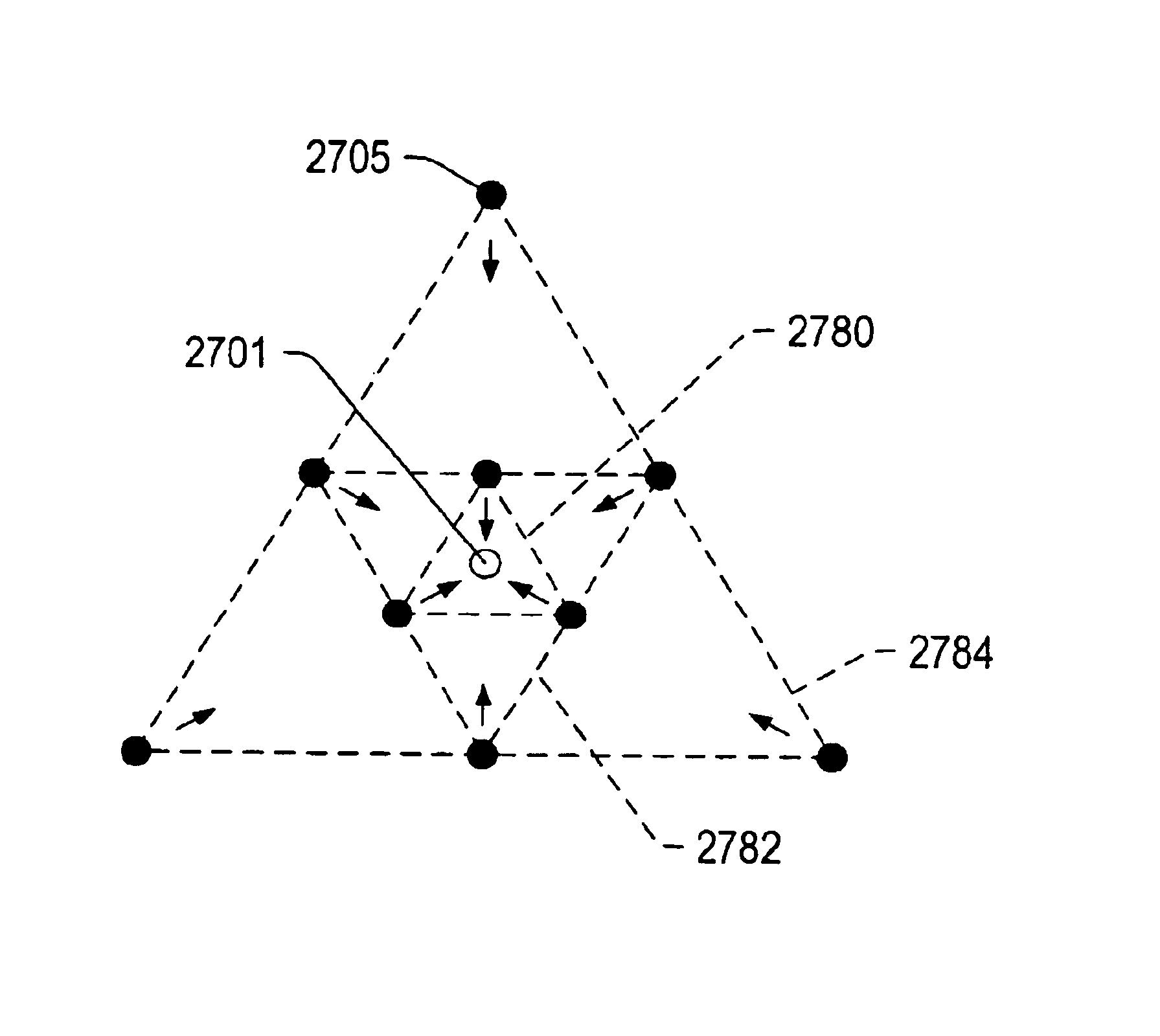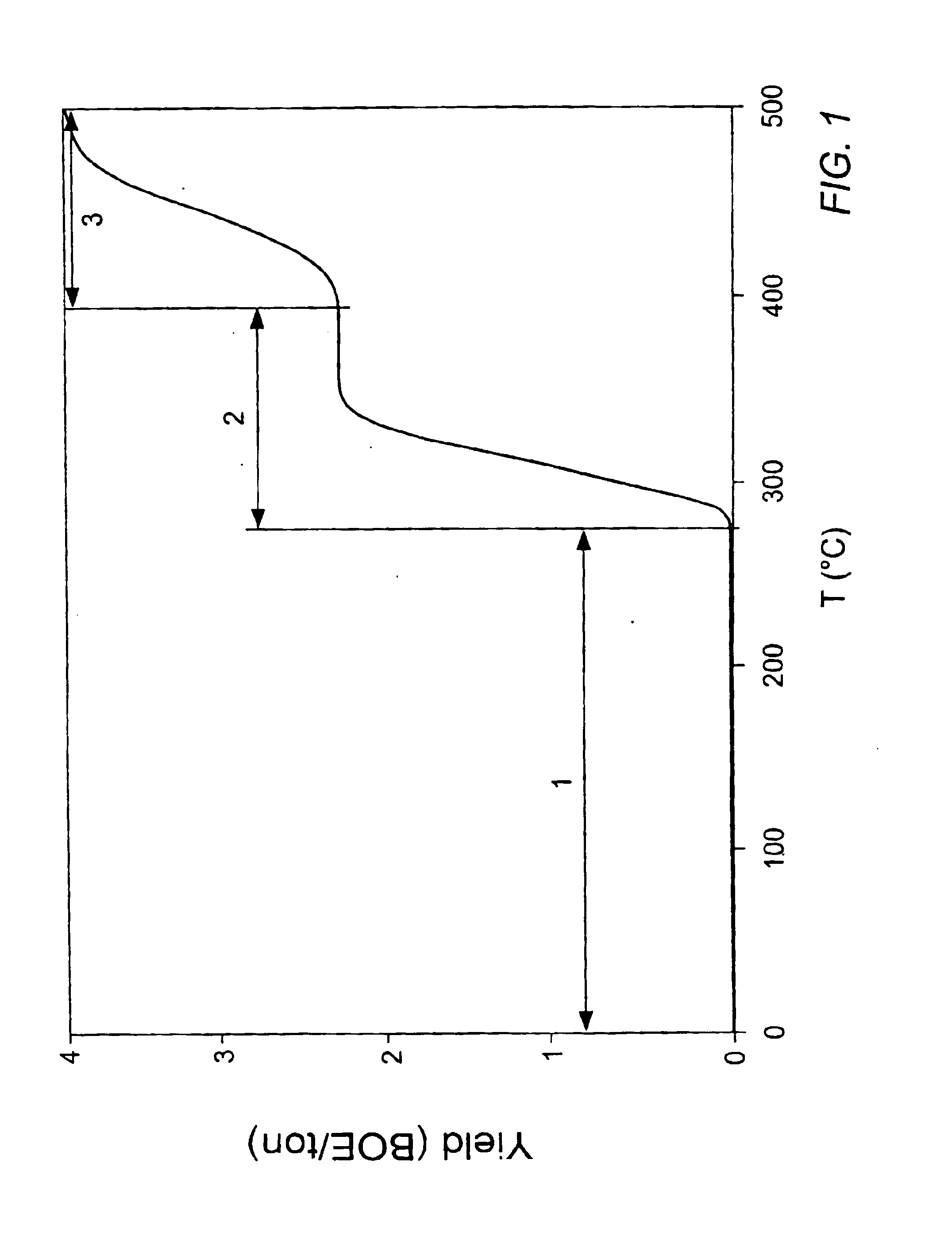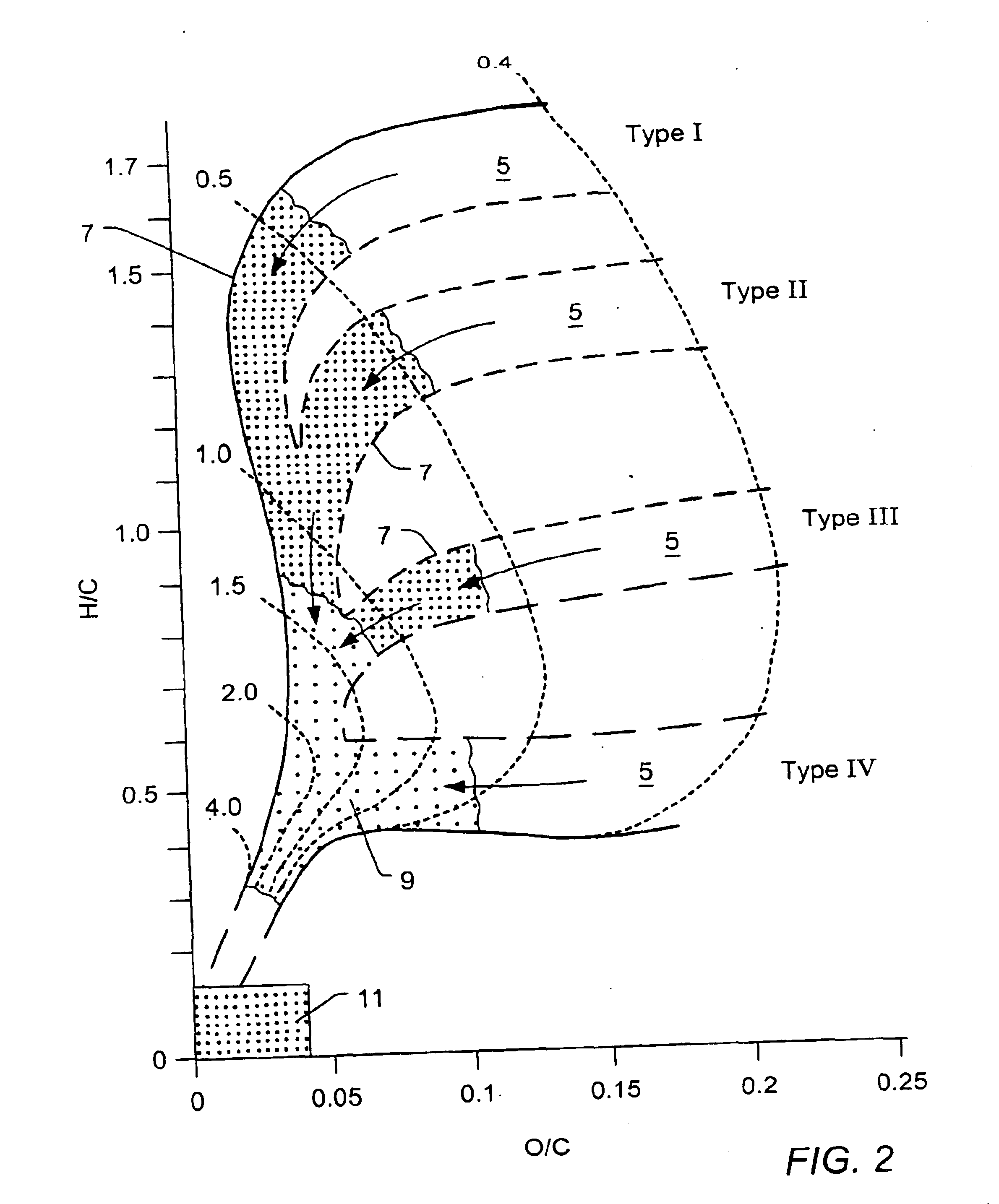In situ thermal processing of a coal formation to increase a permeability/porosity of the formation
a technology of in situ thermal processing and coal formation, which is applied in the direction of survey, insulation, borehole/well accessories, etc., can solve the problems of inability to economically mine coal formations, inability to meet the needs of mining, etc., to achieve the effect of increasing the heating value of the produced synthesis gas
- Summary
- Abstract
- Description
- Claims
- Application Information
AI Technical Summary
Benefits of technology
Problems solved by technology
Method used
Image
Examples
embodiments of production well 102
Embodiments of production well 102 may include valves configured to alter, maintain, and / or control a pressure of at least a portion of the formation. Production wells may be cased wells that may have production screens or perforated casings adjacent to production zones. In addition, the production wells may be surrounded by sand, gravel or other packing material adjacent to production zones. Furthermore, production wells 102 may be coupled to treatment section 108, as shown in FIG. 3. Treatment section 108 may include any of the surface facilities as described herein.
In addition, water pumping wells or vacuum wells may be configured to remove liquid water from a portion of a coal formation to be heated. Water removed from the formation may be used on the surface, and / or monitored for water quality. For example, a plurality of water wells may surround all or a portion of a formation to be heated. The plurality of water wells may be configured in one or more rings surrounding the por...
PUM
| Property | Measurement | Unit |
|---|---|---|
| pressure | aaaaa | aaaaa |
| temperature | aaaaa | aaaaa |
| molar ratio | aaaaa | aaaaa |
Abstract
Description
Claims
Application Information
 Login to View More
Login to View More - R&D
- Intellectual Property
- Life Sciences
- Materials
- Tech Scout
- Unparalleled Data Quality
- Higher Quality Content
- 60% Fewer Hallucinations
Browse by: Latest US Patents, China's latest patents, Technical Efficacy Thesaurus, Application Domain, Technology Topic, Popular Technical Reports.
© 2025 PatSnap. All rights reserved.Legal|Privacy policy|Modern Slavery Act Transparency Statement|Sitemap|About US| Contact US: help@patsnap.com



